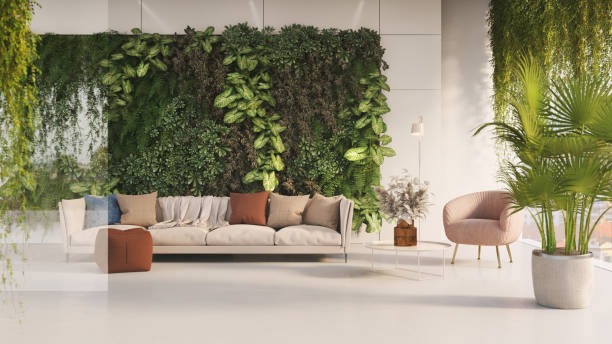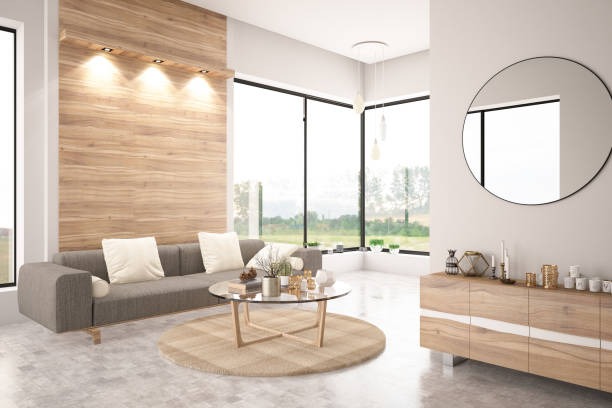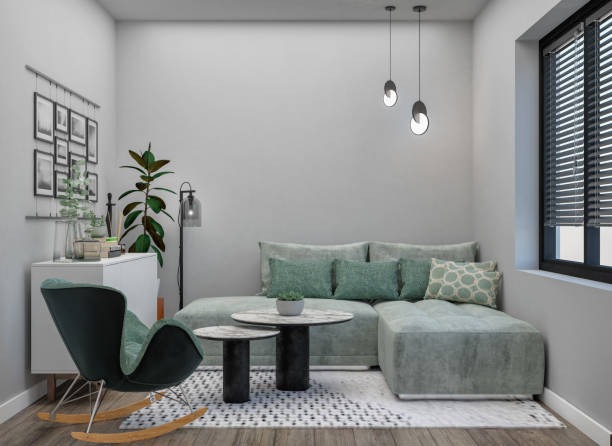Interior design is a captivating field that melds artistic flair with practicality, turning empty spaces into functional, aesthetically pleasing havens. Interior designers are the creative minds behind these transformations, and their roles and responsibilities go far beyond just picking out pretty furnishings. In this blog, we’ll delve into the multifaceted world of interior design and explore the myriad tasks that interior designers undertake to make spaces come alive.

Conceptualization and Planning
At the heart of every interior design project lies a robust concept. Interior designers must work closely with clients to understand their needs, preferences, and lifestyle. This involves:
- Conducting client interviews to identify their vision.
- Analyzing the space’s existing structure, lighting, and flow.
- Setting a clear project budget and timeline.
Space Planning and Layout
Efficient space planning is crucial for making the best use of available square footage. Interior designers must:
- Create detailed floor plans.
- Allocate space for different functions (living, dining, working, etc.).
- Ensure optimal traffic flow and accessibility.
Material and Color Selection
Selecting the right materials and color schemes is where an interior designer’s artistic sensibilities come into play. They must:
- Choose appropriate paint colors, wallpaper, and textures.
- Select flooring materials, countertops, and fixtures.
- Consider the visual and tactile impact of each element.
Furniture and Decor Selection
Interior designers curate a selection of furnishings and decor that aligns with the design concept and the client’s taste. This involves:
- Sourcing furniture pieces, lighting, art, and accessories.
- Ensuring pieces are both functional and visually appealing.
- Incorporating sustainable and eco-friendly options when possible.
Project Management
An essential responsibility of interior designers is project management, which includes:
- Coordinating with contractors, architects, and other professionals.
- Overseeing construction and installation.
- Ensuring that the project stays on schedule and within budget.
Budget Management
Interior designers are responsible for managing the project budget efficiently. This entails:
- Estimating costs for materials, labor, and furnishings.
- Identifying cost-saving opportunities without compromising quality.
- Keeping track of expenses and maintaining financial transparency with clients.
Communication and Collaboration
Effective communication is paramount in interior design. Designers must:
- Maintain clear and open channels of communication with clients.
- Collaborate with contractors, artisans, and vendors.
- Translate client preferences into tangible design elements.
Problem-Solving
Not every project goes smoothly, and interior designers must be adept at problem-solving. This includes:
- Addressing unforeseen challenges during construction.
- Finding creative solutions to design dilemmas.
- Adapting to changes in the project scope or timeline.
Keeping Up with Trends
The world of interior design is ever-evolving, with new materials, technologies, and design trends emerging regularly. Interior designers must:
- Stay updated on industry trends and innovations.
- Continuously expand their knowledge and skills.
- Offer clients fresh and relevant design concepts.
Client Satisfaction
Ultimately, the success of an interior designer’s work is measured by client satisfaction. Designers must:
- Ensure that the final design meets or exceeds the client’s expectations.
- Address any post-installation issues promptly.
- Build lasting relationships with clients for future projects and referrals.
Conclusion
Interior design is a multifaceted profession that requires a blend of creativity, technical knowledge, and project management skills. The roles and responsibilities of interior designers extend far beyond merely selecting color palettes and furnishings; they shape and transform spaces to enhance both form and function. Whether it’s a cozy home, a trendy restaurant, or a corporate office, interior designers are the visionary artists who make everyday spaces extraordinary.




What does an interior designer do?
An interior designer is a professional who specializes in creating functional and aesthetically pleasing interior spaces. They work on designing and arranging elements within a space to enhance its functionality, aesthetics, and overall appeal.
What are the primary responsibilities of an interior designer?
Interior designers are responsible for space planning, selecting and arranging furniture, fixtures, color schemes, materials, and décor to create cohesive and visually appealing interiors. They also work on creating designs that align with the client’s needs, budget, and style preferences.
Do interior designers only focus on aesthetics?
No, interior designers do more than just making spaces look beautiful. They also prioritize functionality, safety, and sustainability in their designs. They aim to create spaces that are practical, efficient, and safe for the occupants while maintaining aesthetics.
